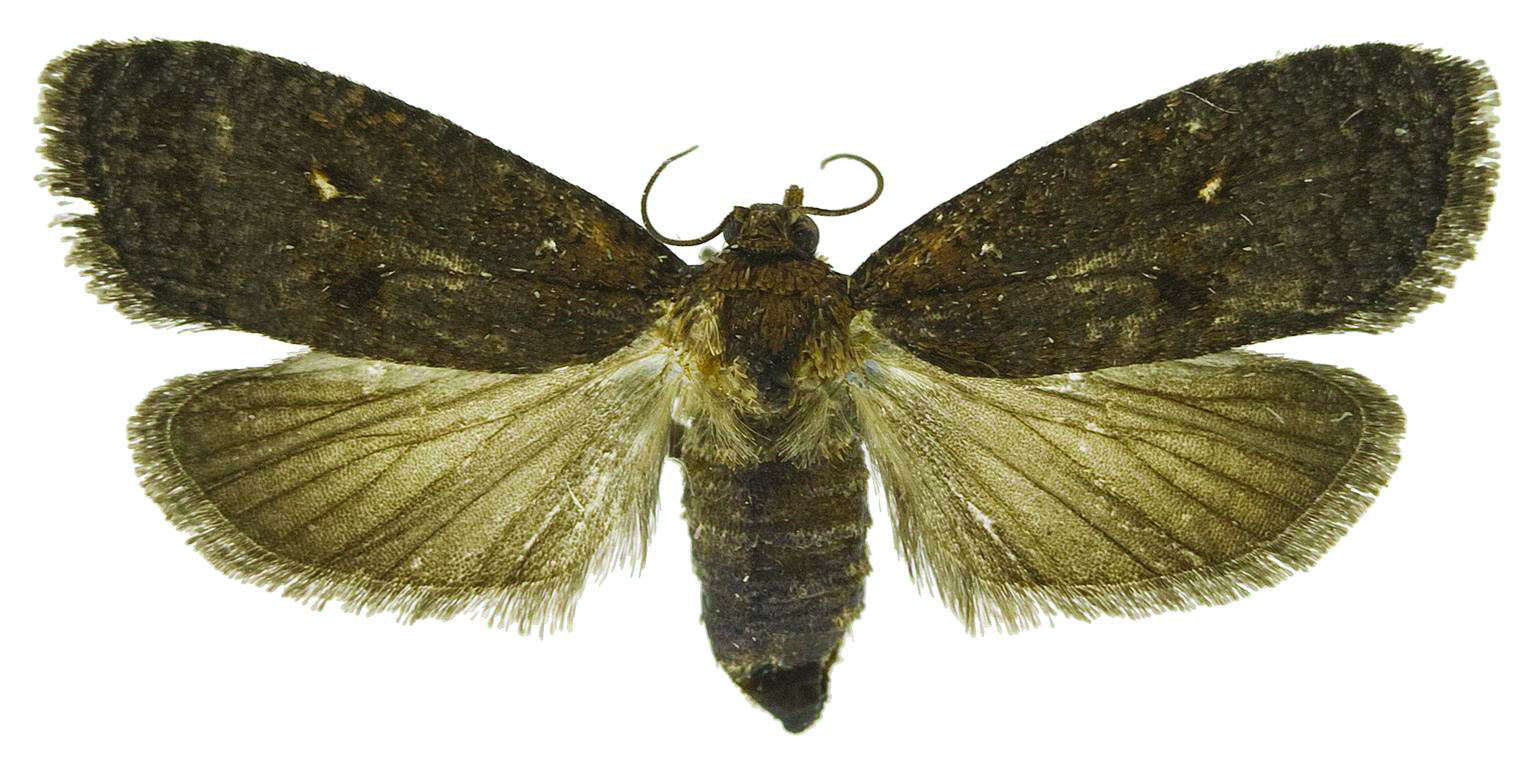
This leafroller moth adult is considered to be only an occasional invader.
Photo: Todd M. Gilligan and Marc E. Epstein, TortAI: Tortricids of Agricultural Importance, USDA APHIS ITP, Bugwood.org
Email your questions about insect identification and pest management technologies and techniques to Dr. Mampe. Your questions most likely will be printed and answered in one of Pest Management Professional’s upcoming Ask the Expert columns.
Q: Moths are being found in the kitchen and living room of a third-floor condo. I’ve emailed you several pictures of the moths; can you identify them so we can offer an appropriate control program?
– Neilson M., New Jersey
A: They are leafroller moths (Tortricidae). The larvae feed on green leaves of plants. They roll the leaf over to make a tube in which they live, securing the tube with silk. These are outdoor insects so, unless the condo owner has lots of green plants inside, the moths are most likely coming in through windows or doors that are left open or are not sealed well. The moths are attracted to lights.
Q: I seem to remember a law that said you could not repeat an application of a residual insecticide for at least 30 days. I use this reason when a customer wants me to return after a few days following a treatment. Is there such a law? If I need to retreat after a few days, what can I do?
– Billy K., New York
A: I know of no such law. In the 1970s, however, the U.S. Environmental Protection Agency (EPA) was considering such a requirement on labels. At the request of the then-National Pest Control Association (now the National Pest Management Association, or NPMA), the company I worked for at the time took several EPA executives to visit some low-income apartments in Washington, D.C. After visiting two apartments, the visitors had seen enough and did not wish to continue. Thus, that 30-day limitation never materialized.
The label is the law, so check the label on the individual products you are using. Some residual labels place a time limit on repeated applications in commercial food-handling establishments, for example.
When customers request a repeat application after a few days, explain to them the chemical hasn’t had time to work or that the chemical has a residual life of far more than 30 days. If pests are still present, maybe you missed a harborage. If that’s the case, you could apply the same insecticide if you are treating different areas. The other possibility is that you have a resistance problem.
Q: A homeowner complained about fleas and flea bites. She has no pets. We have put out several monitors and have not found anything that bites. We have not applied any pesticide. She wants to know what to do next. What should we tell her? The “bites” began after she put in a new kitchen floor. Could this be the cause? Her husband has no bites.
– Dale W., Delaware
A: I’m glad you didn’t apply pesticide without knowing the cause of the problem. If you had and there were no biting insects there, she would be calling you back day after day asking you to spray again. Spraying also reinforces her belief that insects are biting her.
Lots of medical problems cause itching. She may have allergies, or it could be delusional parasitosis (Editor’s Note: For more on DP, also known as Ekbom’s syndrome, see our February 2016 issue).
Regardless, I would suggest seeing an allergist first. If that turns up nothing, consider having an industrial hygienist sample the air for contaminants. The flooring could be causing the problem. If that doesn’t generate answers, it’s best to then leave it to the customer’s family doctor to determine whether DP is the cause.
Leave A Comment